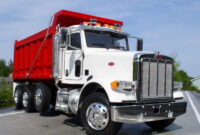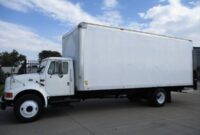How Much Oil Does A 2013 Jeep Wrangler Take pickup.truckstrend.com
Engine oil is the lifeblood of your vehicle, a critical component that lubricates moving parts, dissipates heat, and helps keep the engine clean. For owners of the rugged and adventurous 2013 Jeep Wrangler, understanding its specific oil requirements isn’t just a matter of routine maintenance; it’s essential for preserving the vehicle’s legendary durability and ensuring optimal performance on and off the beaten path. This comprehensive guide will delve into everything you need to know about oil capacity, type, and best practices for your 2013 Jeep Wrangler, empowering you to make informed decisions for its long-term health.
The Heart of the Matter: 2013 Jeep Wrangler Engine and Oil Capacity
How Much Oil Does A 2013 Jeep Wrangler Take
The 2013 Jeep Wrangler (part of the JK generation, produced from 2007-2017) is predominantly powered by one engine: the 3.6-liter Pentastar V6 engine. This robust and widely acclaimed engine was introduced to the Wrangler lineup in 2012, significantly improving power and fuel efficiency over its predecessor. Understanding the exact oil capacity for this engine is the first crucial step in proper maintenance.
For the 3.6L Pentastar V6 engine in your 2013 Jeep Wrangler, the oil capacity is 6 quarts (or approximately 5.7 liters) when the oil filter is replaced. It is paramount to always replace the oil filter during every oil change, as a dirty or clogged filter can compromise the effectiveness of even fresh oil. Adding the correct amount of oil ensures that all vital engine components receive adequate lubrication without being over-pressurized or starved.
Why is this specific capacity so crucial? An engine that is underfilled with oil will suffer from insufficient lubrication, leading to increased friction, excessive wear on parts, and a higher risk of overheating and catastrophic failure. Conversely, overfilling an engine can also cause significant problems. Too much oil can lead to aeration (foaming) as the crankshaft whips through the excess fluid, reducing lubrication effectiveness. It can also create excessive pressure within the crankcase, potentially damaging seals, gaskets, and even the catalytic converter.
Choosing the Right Lubricant: Recommended Oil Type and Grade
Beyond just the quantity, the quality and type of oil you use are equally critical for the longevity and performance of your 2013 Jeep Wrangler’s 3.6L Pentastar engine. Modern engines like the Pentastar are designed with tighter tolerances and operate at higher temperatures, requiring specific oil formulations.
The manufacturer’s primary recommendation for the 2013 Jeep Wrangler with the 3.6L Pentastar V6 engine is SAE 5W-20 Full Synthetic motor oil.
Let’s break down what this means:
- SAE (Society of Automotive Engineers) 5W-20: This is the viscosity grade.
- "5W" indicates the oil’s viscosity (thickness) at low temperatures ("W" stands for winter). A lower number means the oil is thinner in cold weather, allowing for easier cold starts and quicker lubrication.
- "20" indicates the oil’s viscosity at high operating temperatures. A higher number means the oil maintains more body at high temperatures.
- For the 3.6L Pentastar, 5W-20 strikes the ideal balance, providing excellent cold-start protection and maintaining sufficient film strength at operating temperatures.

- Full Synthetic Motor Oil: While conventional oil was once the standard, modern engines like the Pentastar perform best with full synthetic oil.
- Conventional Oil: Derived directly from crude oil, with basic additives. Less resistant to thermal breakdown and sludge formation.
- Synthetic Blend Oil: A mix of conventional and synthetic base oils. Offers some benefits of synthetic at a lower cost.
- Full Synthetic Oil: Chemically engineered from purified base oils, providing superior lubrication, better resistance to temperature extremes, enhanced cleaning properties, and extended drain intervals. For the Pentastar, full synthetic is highly recommended due to its advanced design and the demands placed upon it, especially if you engage in off-roading or heavy-duty use.


API Certification: Regardless of brand, ensure the oil you choose meets the latest American Petroleum Institute (API) service classification (e.g., API SN, SP). This certification guarantees the oil meets industry standards for performance and protection.
Can I use 5W-30? While 5W-20 is the primary recommendation, some owner’s manuals or specific regional guidelines might list 5W-30 as an acceptable alternative, especially in extremely hot climates or if 5W-20 is unavailable. However, always refer to your specific owner’s manual for definitive guidance. Using a thicker oil than recommended can slightly reduce fuel efficiency and potentially impact engine performance in certain conditions.
Beyond Capacity: Understanding Oil Change Frequency and Best Practices
Knowing how much and what kind of oil to use is only part of the equation; knowing when to change it is equally vital.
Manufacturer’s Recommendations: For the 2013 Jeep Wrangler’s 3.6L Pentastar engine, Chrysler generally recommends an oil change every 10,000 miles (16,000 km) or 12 months, whichever comes first, when using full synthetic oil under normal driving conditions.
Factors Affecting Frequency (Severe Duty): It’s crucial to understand that "normal driving conditions" may not apply to all Jeep Wrangler owners. If your driving habits fall into "severe duty" categories, you’ll need to change your oil more frequently, often every 5,000 miles (8,000 km) or 6 months. Severe duty includes:
- Frequent short trips (especially in cold weather) where the engine doesn’t reach full operating temperature.
- Extensive idling or stop-and-go driving.
- Towing a trailer or carrying heavy loads.
- Off-road driving, especially in dusty or muddy conditions.
- Driving in extremely hot or cold temperatures.
- Driving in dusty or sandy environments.
The Importance of Oil Filter Replacement: Every time you change your oil, you must replace the oil filter. The filter traps contaminants like dirt, metal particles, and sludge, preventing them from circulating through the engine. A clogged filter can bypass unfiltered oil, leading to accelerated engine wear.
DIY Oil Change: A Step-by-Step Overview
Performing an oil change on your 2013 Jeep Wrangler is a manageable DIY task for many, saving money and providing a sense of accomplishment.
Supplies You’ll Need:
- 6 quarts of SAE 5W-20 full synthetic motor oil (API certified)
- New oil filter (e.g., Mopar 68079744AD or equivalent high-quality aftermarket filter)
- Oil filter wrench (cap style, typically 24mm or 15/16 inch for the 3.6L Pentastar’s cartridge filter)
- Ratchet with appropriate socket for the drain plug (usually 13mm or 1/2 inch)
- Drain pan (capacity of at least 7 quarts)
- Funnel
- Rags or shop towels
- Gloves
- Jack and jack stands (or ramps) for safe vehicle elevation
- Safety glasses
Basic Steps (Always refer to your owner’s manual for precise instructions):
- Warm the Engine: Drive the Jeep for 5-10 minutes to warm the oil, making it flow more easily.
- Safety First: Park on a level surface, engage the parking brake, and safely elevate the front of the vehicle using jack stands or ramps.
- Locate Drain Plug: Place the drain pan directly under the oil pan’s drain plug (located at the bottom of the oil pan, usually on the passenger side).
- Drain Oil: Carefully loosen and remove the drain plug. Allow all the old oil to drain completely into the pan.
- Replace Oil Filter: The 3.6L Pentastar uses a cartridge-style oil filter, located on top of the engine, typically near the front. Use the appropriate oil filter wrench to unscrew the cap, remove the old filter element, and replace the O-rings on the cap with new ones (usually supplied with the new filter). Insert the new filter element and screw the cap back on, hand-tightening, then tightening a bit more with the wrench until snug. Do not overtighten.
- Reinstall Drain Plug: Once the oil has finished draining, clean the drain plug and its washer (replace the washer if necessary) and reinstall it, tightening securely but not overtightening.
- Refill Oil: Carefully pour 5.5 quarts of the new 5W-20 full synthetic oil into the engine’s oil fill cap. Wait a few minutes for the oil to settle.
- Check Oil Level: Pull out the dipstick, wipe it clean, reinsert it fully, then pull it out again to check the level. It should be between the "MIN" and "MAX" marks. Add the remaining 0.5 quarts gradually if needed, rechecking the dipstick after each addition. Do not overfill.
- Start Engine & Check for Leaks: Start the engine and let it run for a few minutes. Check for any leaks around the drain plug or oil filter housing. The oil pressure light should turn off.
- Final Check: Turn off the engine, wait a few minutes for the oil to settle, and perform a final dipstick check. Adjust as necessary.
- Proper Disposal: Take your used oil to an authorized recycling center or auto parts store that accepts used oil. Never pour it down the drain or into the ground.
Common Pitfalls and Solutions
Even with the right knowledge, mistakes can happen. Here are some common pitfalls and how to address them:
- Underfilling: If the oil level is consistently below the "MIN" mark, add oil immediately. Driving with insufficient oil can cause irreversible engine damage.
- Overfilling: If you’ve added too much oil (above the "MAX" mark), you must drain the excess. This might require partially removing the drain plug or using an oil extractor pump. Do not drive with significantly overfilled oil, as it can damage seals and the catalytic converter.
- Using the Wrong Oil Type/Grade: While a one-time mistake might not be catastrophic, continued use of the wrong oil can lead to premature engine wear, reduced fuel efficiency, and compromised performance. If you’ve used the wrong type, it’s best to perform an oil change with the correct oil as soon as possible.
- Ignoring Oil Changes: Skipping oil changes allows sludge to build up, reduces the oil’s lubricating properties, and leads to increased friction and heat, drastically shortening engine life. Adhere strictly to the recommended intervals.
Maintaining Optimal Performance: Tips for Jeep Wrangler Owners
- Regularly Check Oil Level: Even if you adhere to change intervals, check your oil level at least once a month, and before any long trips or demanding off-road excursions. This helps catch leaks or consumption issues early.
- Keep Records: Maintain a log of your oil changes, including the date, mileage, and type of oil used. This is invaluable for tracking maintenance and can be helpful for resale.
- Listen to Your Engine: Unusual noises, such as ticking or knocking, can sometimes indicate low oil pressure or lubrication issues. Address these promptly.
- Consider a Quality Oil Filter: Don’t skimp on the oil filter. A high-quality filter provides better filtration and ensures consistent oil flow.
Comprehensive Oil Information Table: 2013 Jeep Wrangler (3.6L Pentastar V6)
This table summarizes the key oil information for your 2013 Jeep Wrangler, including typical cost ranges for DIY and professional services.
| Feature | Specification for 2013 Jeep Wrangler (3.6L Pentastar V6) | Typical Cost Range (Estimated) | Notes |
|---|---|---|---|
| Engine Type | 3.6L Pentastar V6 | N/A | The standard and only engine for the 2013 JK Wrangler. |
| Oil Capacity (with filter) | 6 Quarts (5.7 Liters) | N/A | Always replace the oil filter during an oil change. |
| Recommended Oil Type | SAE 5W-20 Full Synthetic | N/A | Ensure it meets API SN or SP standards for best performance and protection. |
| Alternative Oil Type | SAE 5W-30 Full Synthetic (check manual) | N/A | May be acceptable in specific conditions; refer to owner’s manual. |
| Typical Cost of 6 Quarts Full Synthetic Oil | N/A | $30 – $60 | Prices vary by brand, sales, and retailer. High-quality synthetic is an investment in your engine. |
| Typical Cost of Oil Filter | N/A | $5 – $15 | Cartridge-style filter for the 3.6L Pentastar. OEM (Mopar) or reputable aftermarket brands recommended. |
| Estimated DIY Oil Change Cost | N/A | $35 – $75 | Cost of materials (oil + filter). Does not include tools or disposal fees. |
| Estimated Professional Oil Change Cost | N/A | $70 – $120+ | Varies significantly by location, service center (dealership vs. independent shop), and whether conventional or synthetic oil is used. |
| Recommended Change Interval (Normal Duty) | 10,000 miles or 12 months (whichever comes first) | N/A | Using full synthetic oil. |
| Recommended Change Interval (Severe Duty) | 5,000 miles or 6 months (whichever comes first) | N/A | Applies to frequent short trips, towing, off-roading, extreme temperatures, or dusty conditions. |
Frequently Asked Questions (FAQ)
Q: Can I use conventional oil in my 2013 Jeep Wrangler?
A: While your engine might run on conventional oil, it is strongly recommended to use full synthetic SAE 5W-20 for the 3.6L Pentastar V6. Full synthetic provides superior protection, especially in extreme conditions, and allows for the extended drain intervals recommended by the manufacturer. Using conventional oil may require more frequent changes.
Q: How often should I check my oil?
A: You should check your oil level at least once a month, and always before long trips or periods of heavy use (like off-roading or towing). This helps you detect leaks or oil consumption early.
Q: What happens if I put too much oil in?
A: Overfilling can cause the crankshaft to churn the oil into a foam (aeration), which reduces its lubricating properties. It can also create excessive pressure, potentially damaging engine seals, gaskets, and even leading to issues with the catalytic converter over time. If significantly overfilled, it’s best to drain the excess.
Q: Is 5W-30 acceptable for my 2013 Wrangler?
A: The primary recommendation is 5W-20. While 5W-30 might be listed as an alternative in some owner’s manuals for specific conditions (e.g., extremely hot climates), sticking to the recommended 5W-20 is generally best for optimal fuel economy and engine performance. Always consult your owner’s manual.
Q: What kind of oil filter should I use for my 3.6L Pentastar?
A: The 3.6L Pentastar uses a cartridge-style oil filter. You should use a high-quality filter designed specifically for this engine. OEM (Mopar) filters are always a safe bet, but reputable aftermarket brands like Wix, Mann, or Bosch also make excellent filters. Ensure the new filter comes with replacement O-rings for the filter housing cap.
Q: My oil light came on, what should I do?
A: If your oil pressure warning light illuminates while driving, it indicates a critical issue (low oil pressure or low oil level). You should immediately and safely pull over, shut off the engine, and check your oil level. Do not continue driving if the light remains on after checking and topping off the oil, as this could lead to severe engine damage. Have your vehicle inspected by a professional.
Conclusion
Understanding how much oil your 2013 Jeep Wrangler takes – specifically, 6 quarts of SAE 5W-20 full synthetic motor oil – is fundamental to its health and longevity. The 3.6L Pentastar V6 is a robust engine, but like any finely tuned machine, it thrives on proper care and attention. By adhering to the recommended oil capacity, using the correct type and grade of oil, and following a diligent oil change schedule tailored to your driving conditions, you’ll ensure your iconic Jeep Wrangler continues to conquer trails and daily commutes with reliable performance for years to come. Responsible oil maintenance isn’t just a chore; it’s an investment in your Jeep’s adventurous spirit.



